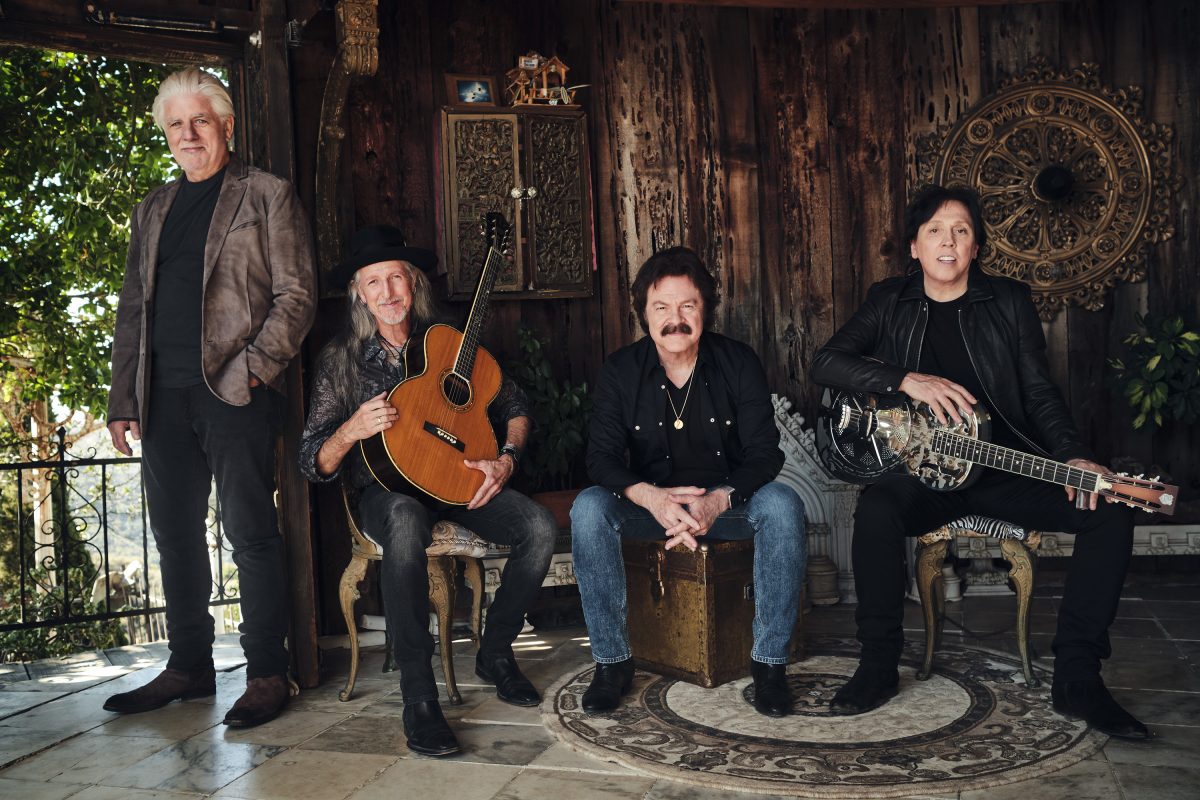At first blush, the Stooges and Steely Dan — who will close out the Beale Street Music Festival on Friday and Saturday nights, respectively — have nothing in common beyond their proximity in record-store bins. They were two of the very best American rock bands in that diffuse, transitional period between the breakup of the Beatles and the rise of punk, but it’s hard to think of two major rock bands more different: in sound, image, background, and fan bases. (The only people who like both bands: rock critics.)
The Stooges, whose original run lasted from 1969 to 1973 (with a hiccup of a breakup in between) and whose original recorded output consisted of 23 songs and just over a hundred minutes of music across three albums, were essentially the bridge between mid-’60s garage rock and mid-’70s punk. Led by snarling, combative, confrontational singer Iggy Stooge (later Pop), the Stooges were middle-class Michigan kids who blasted away at suburban nothingness with the biggest, ugliest sound they could muster. Iggy later described the band as “juvenile-delinquent kids, running wild in America.” (By contrast, Steely Dan could have described themselves as overprivileged collegians, smirking lazily in the dorm lounge.)
The Stooges’ first, eponymous album, produced by the Velvet Underground’s John Cale (who didn’t seem to quite get them) included a few duds and three eternal anti-anthems — “1969,” “No Fun,” and the elemental “I Wanna Be Your Dog.” Iggy, at age 21, opens the record — and closes the decade — with a summertime-blues lament for an age of literal rioting in the streets: “Well, it’s 1969 okay/War across the U.S.A./It’s another year for me and you/Another year with nothing to do.”
The band’s last album, 1973’s David Bowie-produced Raw Power, added a fourth classic, “Search and Destroy,” which not even a Nike TV commercial could ruin. But, in between, was the megaton bomb: Fun House, which opens with Iggy yipping and howling before the band launches into the menacing groove of “Down on the Street.” Intense dirges “Dirt” and “Loose” were a self-lacerating peak no punk band would ever match. The title track, with Steve Mackay joining on a squawky saxophone, is like a spazz-out, garage-rock version of a James Brown jam.
If the Stooges were a pure rock band, Steely Dan was nothing of the sort. After launching their 1972 debut Can’t Buy a Thrill with the beautiful, bitter radio-rock classic “Reeling in the Years,” the band became AOR staples throughout the decade. Yet musical partners Walter Becker and Donald Fagen never really seemed that fond of rock. Rather, Becker and Fagen assembled their sui generis sound from every element tangential to rock-and-roll — jazz, traditional pop, blues, and R&B. And, unlike the Stooges, who got an unlikely record deal on the strength of their assaultive live shows, Steely Dan eschewed the traditional origin-and-development arc of the “rock band,” forming in the studio and pretty much staying there. Steely Dan has almost always been a two-man operation — with a rotating cast of studio musicians — and the “band” ceased touring after 1974 until an unlikely return to the stage in the ’90s. Where the Stooges were committed to total audience 
The Stooges
engagement, Steely Dan preferred not to interact with the concert rabble.
Where the Stooges spoke directly and simply, lashing out with a first-person revulsion that was clearly their own, Steely Dan’s songs were tricky, laden with irony and delivered by untrustworthy narrators, qualities hard to hear through a sonic aesthetic that could sound like cocktail hour for upscale fortysomethings.
But the very source of Steely Dan’s charm is in the tension, such as it is, between the band’s low-life lyrics and high-toned jazz-rock soundscapes (a dynamic reinforced by the knowledge that this totem of serious, musicianly respectability is named for a dildo in William S. Burroughs’ Naked Lunch). Those plush, meticulous backing tracks are perhaps best heard as the idealized interior soundtrack of the typical Steely Dan protagonist — invariably a well-educated and well-off white guy of questionable moral character for whom things aren’t quite working out. Fagen has even sort of endorsed this reading by confessing that he and Becker think of their albums as comedy records to some degree.
Steely Dan albums are populated by junkies, losers, and killers, but these subjects tend to be approached with distance and irony. The Stooges were the “dirt” they sang about. And yet this ostensible perversity unites the bands. Both the Stooges and Steely Dan were bad-vibe bands, essaying a societal sickness without ever making message music. They approached the same bad shit from very different perspectives, and the more you listen and learn about them, the more the distinctions begin to blur. Steely Dan’s songs are more writerly, to be sure, but are also suffused with cryptic, sneakily personal references. And, as primitive as the Stooges may have sounded, they were no savages. In later years, Iggy explained the band’s music as a deliberate, thought-through artistic strategy: “Slowly I came up with a kind of concept. A lot of it was based on the attitude of juvenile delinquency and general mental grievance that I’d gotten from these dropouts I was hanging out with,” he said, comparing the band’s basic, overwhelming sound to the drill presses at hometown Ford plants.
The bands also shared a jazz connection, though Steely Dan were inspired by bop, and the Stooges were more attracted to the atonal attack of free jazz.
The Stooges and Steely Dan have also made comebacks this decade, a move that, on record at least, has worked out better for Steely Dan. (In concert, this dynamic could well be reversed.) This is predictable: Steely Dan’s music has always sounded “old,” so, in a way, Becker and Fagen may just be catching up with their own sound. By contrast, the Stooges’ “juvenile-delinquent” rock doesn’t befit AARP members, and on the band’s recent comeback album, The Weirdness, you can hear Iggy and original bandmates Ron and Scott Asheton (with Mackay back on sax as well) struggle to keep pace with the past.
Where Becker and Fagen have only grown more familiar with the questionable characters they’ve long given voice to, Iggy struggles to enliven an aesthetic rooted in a snotty, personal dissatisfaction that doesn’t age well. The result is lyrics like, “I got the top down on my Cadillac” and “You can’t have friends/The money’s gonna see to that.”
Steely Dan’s comeback album, 2000’s Two Against Nature, was a triumph by comparison. The cheekily titled Two Against Nature was something of an album-length sequel to the band’s last hit single, 1980’s “Hey Nineteen,” in which a class of ’67 “dandy of Gamma Chi” tries to pick up a girl too young to remember Aretha Franklin, a mortality-enforcing romantic failure that leaves our hero repeating the refrain “The Cuervo Gold/The fine Colombian/Make tonight a wonderful thing” as jazz-fusion sings him to sleep.
Two Against Nature is consumed with tales of aging men in pursuit of sex, from “Gaslighting Abbie”‘s cryptic triangle to the protagonist of “Almost Gothic,” who is so infatuated with a Little Eva of Bleecker Street that he’s “sizzling like an isotope.” But most memorable of all is “Janie Runaway.” It’s the story of a Manhattan painter rejuvenated by jailbait Janie who ends the song angling for a threesome with her friend Melanie.
Two Against Nature completed Steely Dan’s comeback by beating out Eminem’s Marshall Mathers LP for the Grammy, a feat that was widely derided as an example of the Grammys’ old-fogey instincts and probably was. But what critics and Grammy voters seemed to miss, equally, is that Two Against Nature is, in its own way, as prickly, confrontational, and outré as The Marshall Mathers LP — or anything by the Stooges.


